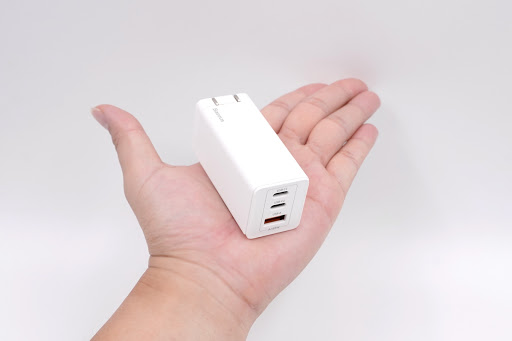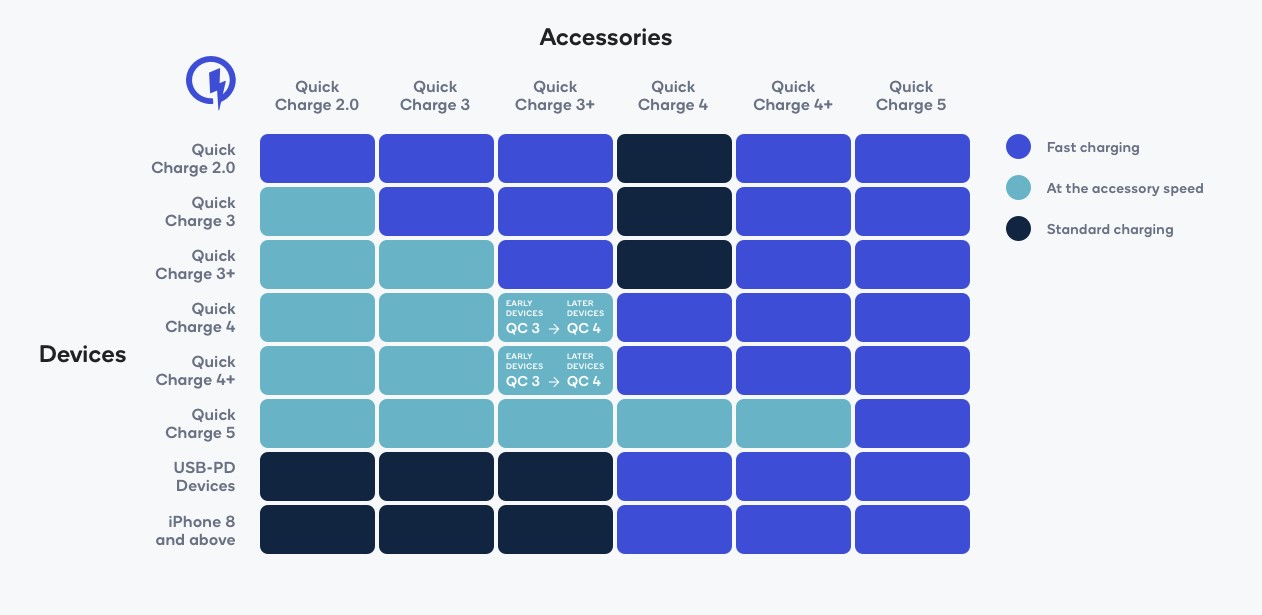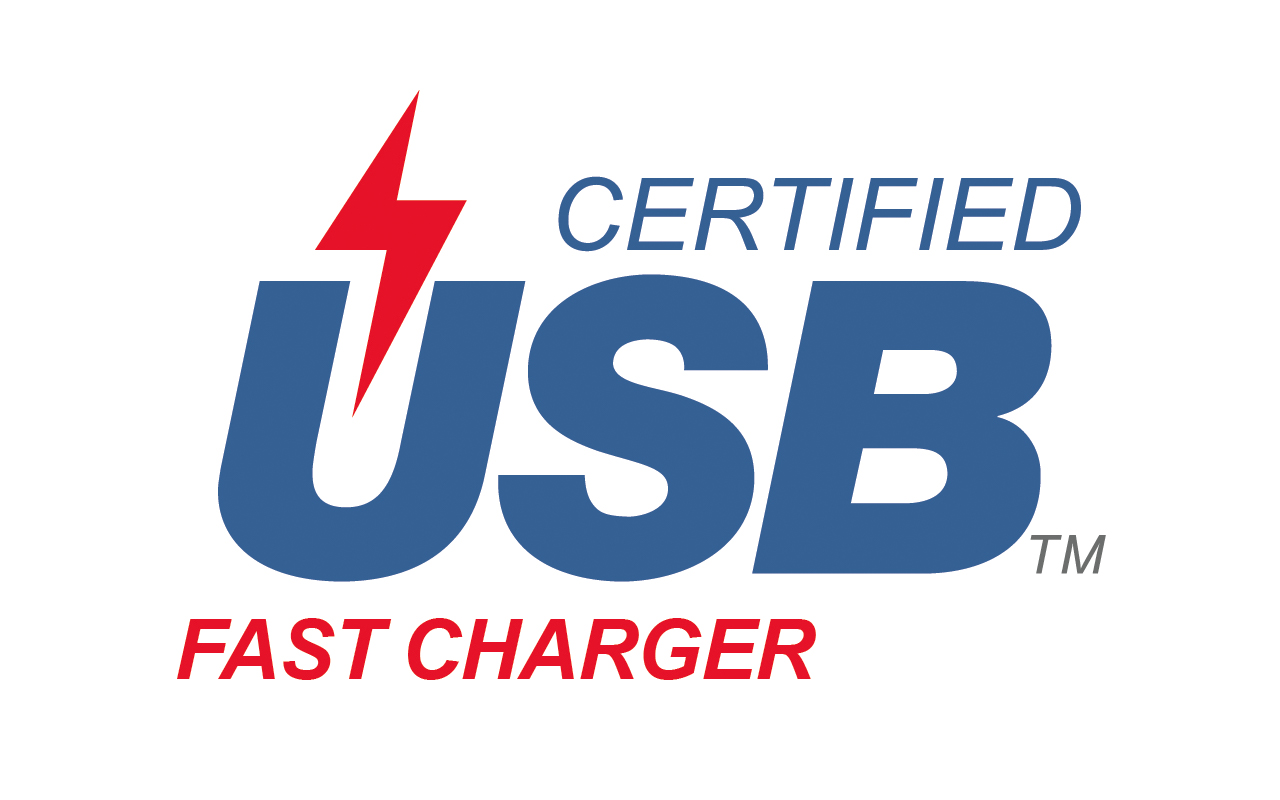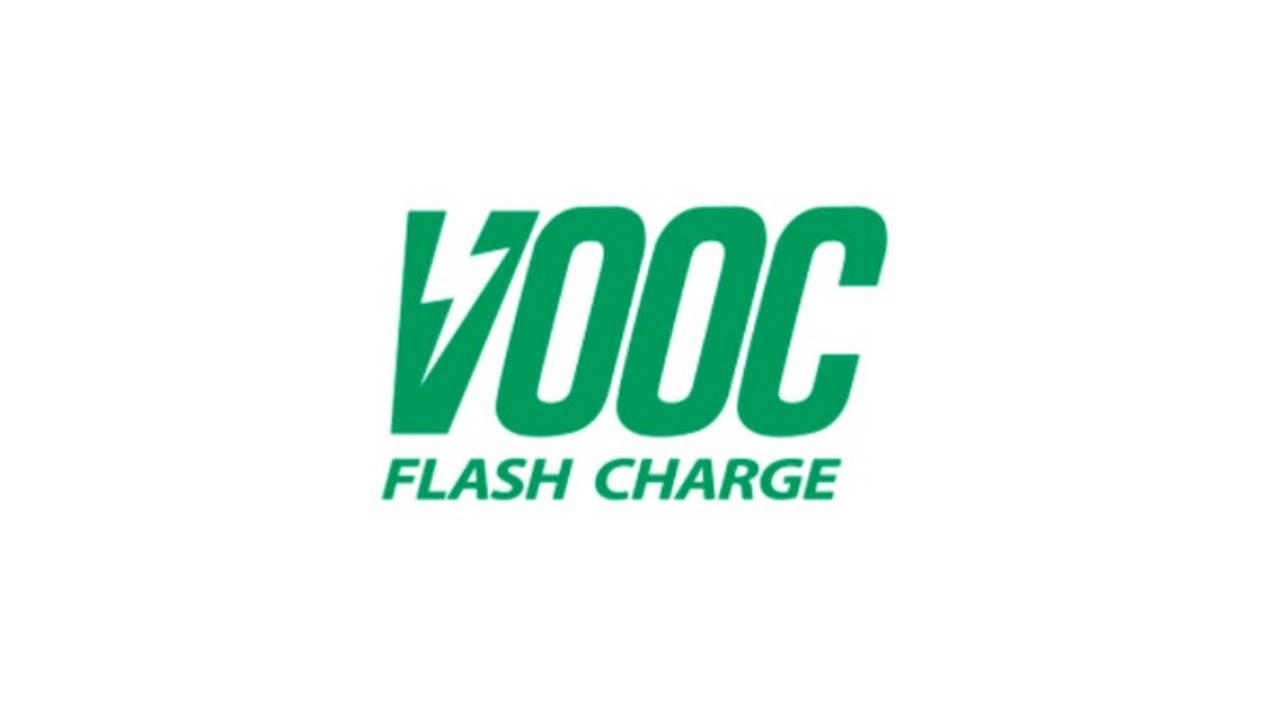Last Updated on April 15, 2021 by Asif Iqbal Shaik
Almost all modern smartphones and tablets have the fast charging feature, which helps the devices in getting charged faster than the usual 5W or 10W rates. However, not all devices use the same fast charging speed or technology. In this article, we will explain various types of fast charging technologies, how they work, and which phones are compatible with which chargers. Some fast charging technologies even work with laptops and smartwatches.
What Is Fast Charging In Smartphones, Tablets, & Laptops?
Subscribe to Onsitego
Get the latest technology news, reviews, and opinions on tech products right into your inboxFast charging delivers higher power to smartphones and tablets. Generally, a USB port delivers 2.5W of power, and fast charging offers higher than 2.5W. However, in modern-day terminology, fast charging usually refers to 15W or higher power.
Earlier, fast charging used to be available only on mid-range and high-end smartphones and tablets, but even entry-level devices have fast charging. Mid-range and high-end devices these days are compatible with extremely fast charging speeds, usually 25W or higher. Some smartphones are compatible with as high as 120W of power.
In terms of laptops, fast charging varies wildly depending on the laptop’s form factor, processor, and battery size. Thin-and-light laptops usually have 30W to 45W charging, while fast charging goes as high as 60W or 90W. Bulkier gaming laptops usually have 90W charging, and faster charging usually refers to 120W or higher charging speeds.
Popular Fast Charging Technologies List: USB PD, Quick Charge, VOOC, Dart Charge, Flash Charge, & More
There are quite a few fast charging standards right now, but the most popular ones are including USB IF’s Power Delivery and Qualcomm’s Quick Charge. Here’s the complete list of fast charging standards:
- Qualcomm: Quick Charge (10W), Quick Charge 2.0 (18W), Quick Charge 3.0 (up to 36W), Quick Charge 4.0 (up to 100W), Quick Charge 4+ (up to 100W), and Quick Charge 5 (more than 100W)
- USB IF: USB Power Delivery (up to 100W)
- OPPO: VOOC Charge (25W), SuperVOOC Charge (50W)
- OnePlus: Dash Charge (20W), Warp Charge (30W, 50W, 65W)
- Realme: SuperDart Flash Charge (50W)
- Vivo & iQOO: Flash Charge (33W), Super Flash Charge (up to 120W)
- Samsung: Adaptive Fast Charge (15W/18W), Super Fast Charge (25W/45W)
- MediaTek: PumpExpress 2.0+ (15W), PumpExpress 3.0 (30W), PumpExpress 4.0 (25W)
- Huawei & Honor: SuperCharge (25W), SuperCharge 2.0 (40W)
- Motorola: TurboPower (15), TurboPower 30 (30W)
Qualcomm Quick Charge: Only Available On Devices With Snapdragon Processors
When there was no fast charging standard, Qualcomm came up with its proprietary Quick Charge in 2013. It referred to 10W (5 volts and 2 amperes) of power. In the following years, Qualcomm released Quick Charge 2.0 (18W) in 2014, Quick Charge 3.0 (up to 36W) in 2016, Quick Charge 4.0 (100W) in 2017, and Quick Charge 5 (more than 100W) in 2020. However, ever since the launch of the USB Power Delivery standard, which is royalty-free, the adoption of Quick Charge has dropped quite a bit. And it is needless to say that Quick Charge is only available on devices that use Qualcomm’s Snapdragon processors. The Quick Charge 4.0 and Quick Charge 5 standards are compatible with USB PD.
USB Power Delivery & PPS: Royalty-Free Fast Charging Standard Is Gaining Traction
USB IF is the body that governs the USB standards, and it created the USB Power Delivery as the royalty-free fast-charging standard that works across smartphones, tablets, and laptops. It is at least 15W, but goes as high as 100W on laptops. PPS (Programmable Power Supply) is a part of USB PD, and it is needed by products from some firms like Samsung.
Apple, Google, Microsoft, Samsung, and others are supporting the USB PD fast-charging standard, and Google is pushing more smartphone brands to implement USB PD in their smartphones in addition to the proprietary technologies developed by smartphone OEMs. For example, the OnePlus 9 supports the company’s own Warp Charge standard as well as USB PD. In the future, expect the USB PD’s popularity to rise since it is powerful enough and is royalty-free.
OnePlus’ Warp Charge & Realme’s SuperDart Charge Are Based On OPPO’s VOOC & SuperVOOC Standards
OPPO’s, OnePlus’, and Realme’s fast charging technologies are quite similar to each other. Basically, the technologies are developed by OPPO, and the company’s sub-brands OnePlus and Realme have rebranded them as their own. Hence, when you try to charge OnePlus with Realme’s SuperDart chargers, they work just fine.
However, these standards are incompatible with USB PD and Quick Charge, which means that you need to use chargers bundled or sold by OPPO, OnePlus, and Realme.
Vivo & iQOO Use Flash Charge & Super Flash Charge
Vivo has developed 33W Flash Charge and 120W Super Flash Charge technologies, which are also used by its sub-brand iQOO. These technologies are not compatible with USB PD, which means you have to use the bundled charger or buy a charger only from those brands.
Motorola & Samsung’s Fast Charging Technologies Are Based On Qualcomm’s Quick Charge and USB PD Standards
Motorola’s TurboPower and Samsung’s Adaptive Fast Charge are compatible with Quick Charge 2.0. With SuperFast Charge, Samsung has moved to USB PD, so if you want to fast charge a Samsung smartphone or tablet at 25W or 45W, you would need a USB PD charger with PPS compatibility. Motorola TurboPower 30 is based on USB PD.
Which Fast Charging Technology Is The Best?
All fast charging standards are fast enough and good enough in their own right, and it all comes down to compatibility. Right now, USB PD is turning out to be the most popular fast charging technology, and thanks to the push from Apple, Google, Samsung, and PC makers, USB PD could become the most sought-after fast charging standard going forward. It is powerful enough (up to 100W) to charge a smartphone or a laptop within an hour or so. While Quick Charge is its best competitor, Qualcomm has been implementing USB PD compatibility into its fast charging technology.
While OPPO’s, OnePlus’, Realme’s, and Vivo’s fast charging technologies are pretty darn powerful, incompatibility with USB PD makes them a no-go for devices that are not made by these brands. MediaTek’s newer PumpExpress standards are compatible with Quick Charge 3.0 and USB PD. You can find the list of 2021’s best fast chargers in India here.






Discussion about this post